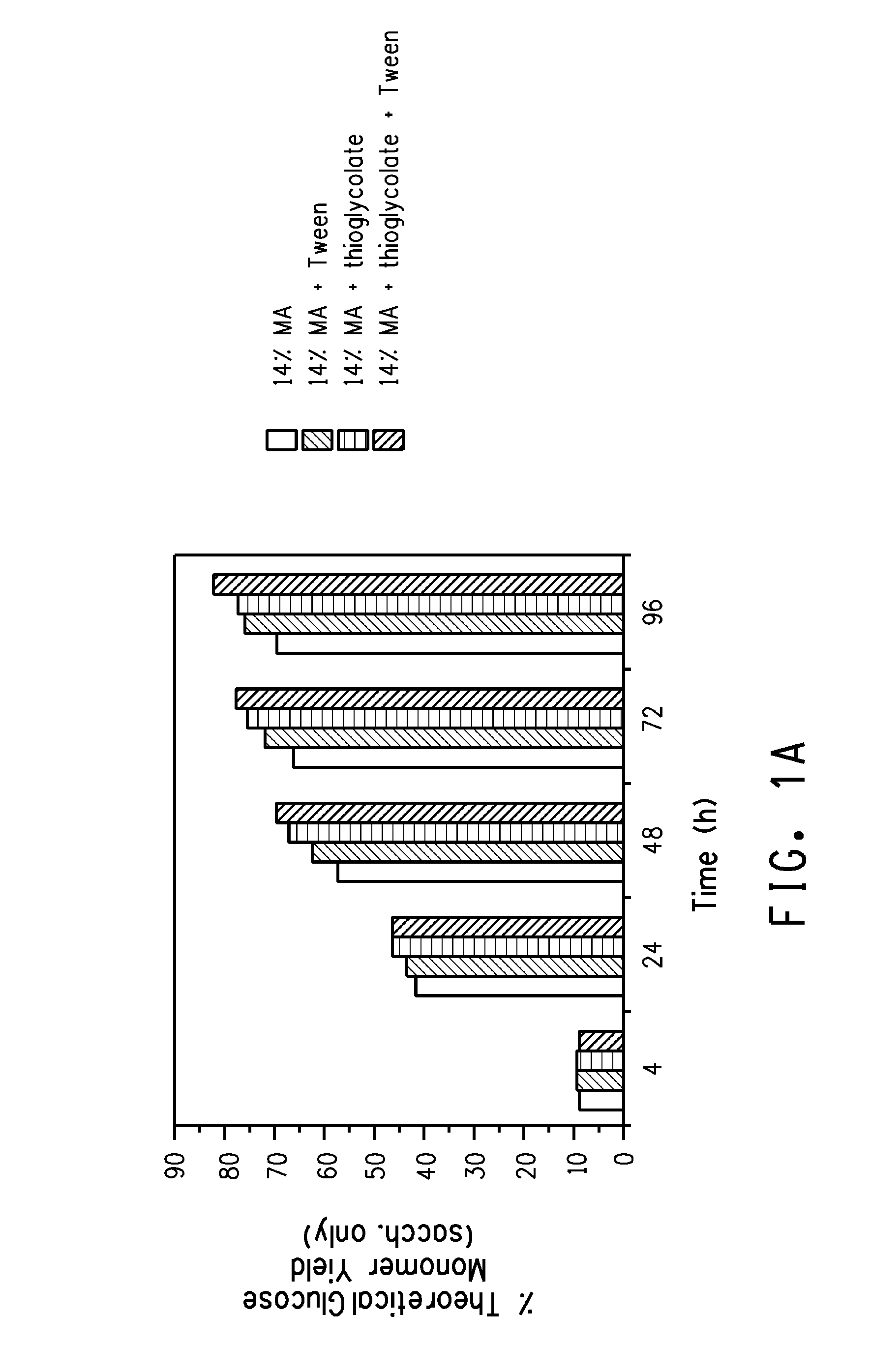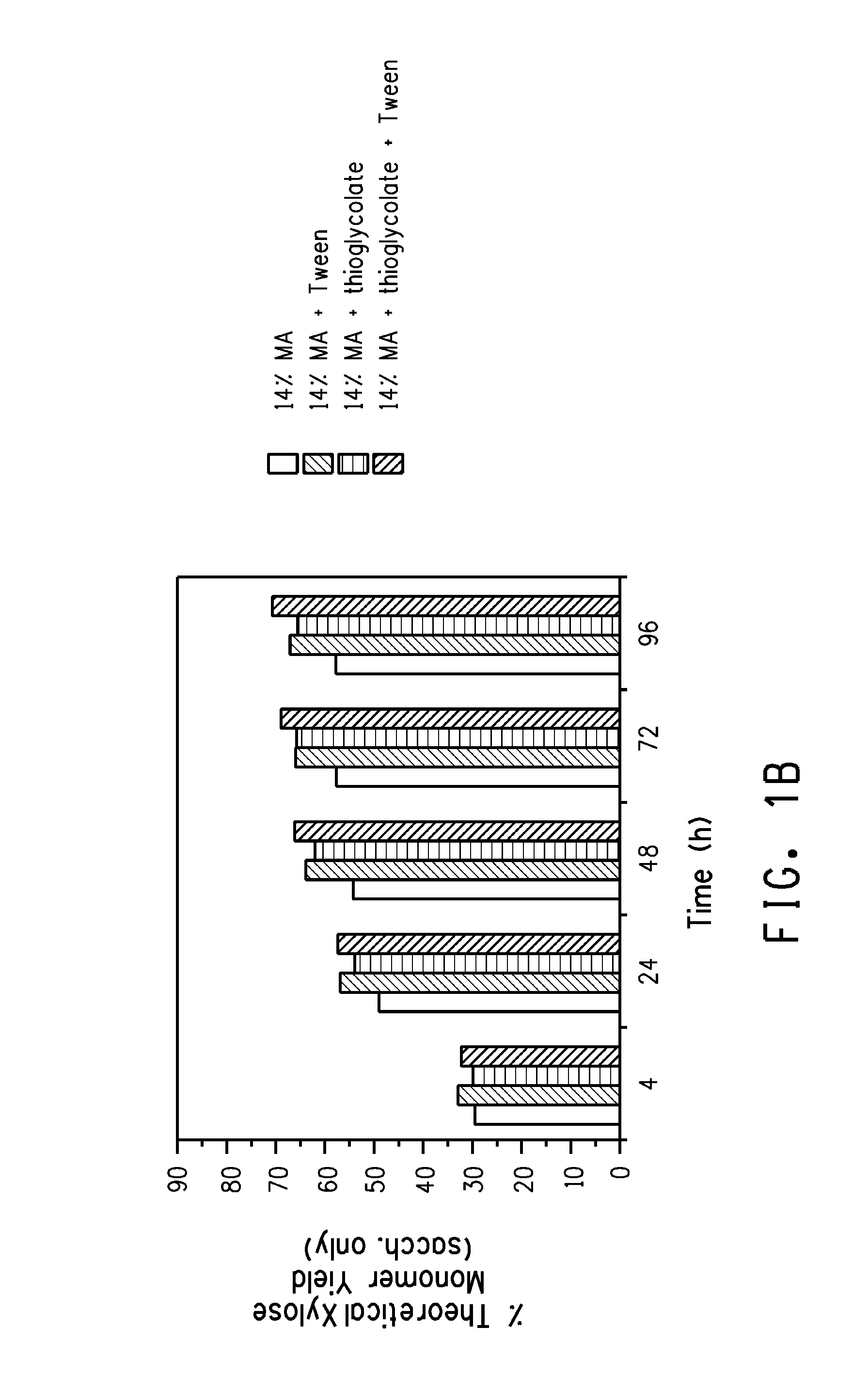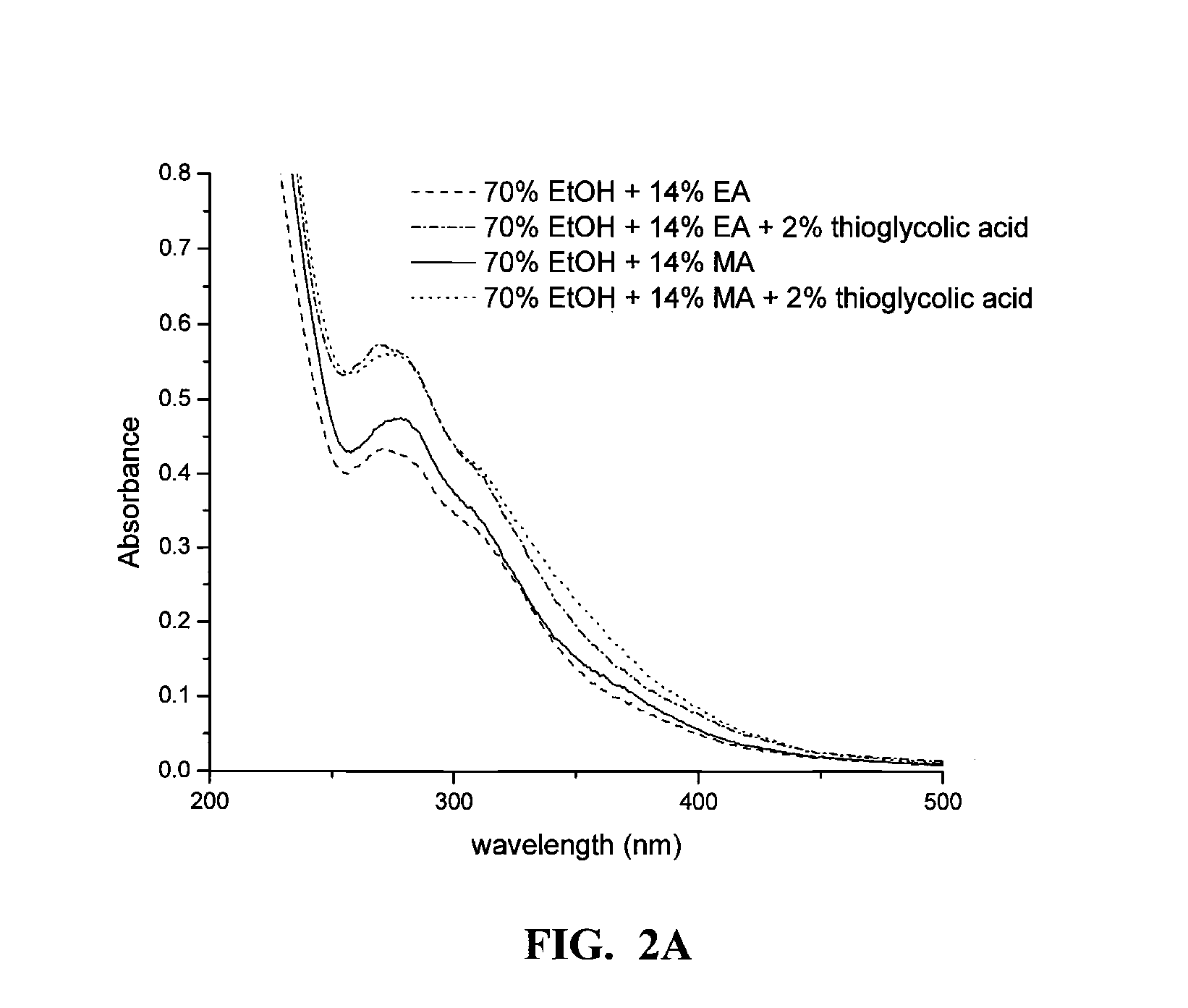Organic solvent pretreatment of biomass to enhance enzymatic saccharification
a biomass and organic solvent technology, applied in the direction of glucose production, sugar derivates, biofuels, etc., can solve the problems of poor sugar recovery, inaccessibility of cellulose to enzymatic hydrolysis, surface to which the enzymes bind non-productively, etc., and achieve high yield of fermentable sugars , high capital cost, cost-effective
- Summary
- Abstract
- Description
- Claims
- Application Information
AI Technical Summary
Benefits of technology
Problems solved by technology
Method used
Image
Examples
example 1
Effective Ethanol Concentration
[0137]The purpose of this Example was to examine the effect of the concentration of solvent (e.g., ethanol) in water on the recovery of carbohydrate and on the solubilization / extraction of lignin in the absence of pH control. Bagasse (0.2 g, 95.78% dry matter) was suspended in 1.56 mL of an EtOH / water solution containing various concentrations (from 0 to 80%) of EtOH. The suspensions were loaded into type 316 stainless steel tubing (¼ inches ID, ⅜ inches OD, 4 inches long) capped by Swagelock fittings (Penn Fluid System Technologies, Huntingdon Valley, Pa.). These were placed in a fluidized sand bath (Techne Model SBS-4, Techne Inc., Burlington, N.J.) and heated at 180° C. for 2 h and cooled rapidly by plunging into a water bath at room temperature. The samples were removed from the tubes and filtered by centrifugation at 14,000 rpm using Spin-X filters (Costar, Corning Inc., Corning N.Y.) at room temperature in a table top centrifuge (Spectrifuge 16M,...
example 2
Effect of Alkaline Organic Solvent Solution Pretreatment on Lignin Extraction
[0143]The purpose of this Example was to examine the effect of raising the pH on organic solvent solution pretreatment at different EtOH / H2O ratios on carbohydrate retention and lignin extraction and on monomeric sugar during subsequent enzymatic saccharification. Given that autohydrolysis lowers the pH, hydrolyzes xylan, and promotes the loss of xylose, the pH of the pretreatment was elevated by the addition of NaOH. The effect of higher pH on xylose recovery is demonstrated below. Sugar cane bagasse (0.25 g, 95.78% dry matter) was suspended in 1.75 mL of a solvent containing EtOH (20-80% in water) and 8% NaOH (w / w biomass) plus 1 mg anthraquinone (AQ, a catalyst for lignin fragmentation). The initial pH of this solution was ˜13.7. As described in Example 1, the suspensions were loaded into type 316 stainless steel tubing, capped, treated at 168° C. for 140 min and cooled in room-temperature water. The sam...
example 3
The Effect of Alkylamines on Pretreatment of Biomass Prior to Saccharification
[0146]The purpose of this Example was to study the effect of the presence of alkylamines in the organic solvent solution (70% EtOH in water v / v) on the lignin content of the biomass following pretreatment and on the carbohydrate recovery following pretreatment and saccharification.
[0147]Sugar cane bagasse (0.375 g, 95.78% dry matter) was suspended in 1.125 mL of solvent containing 70% EtOH in H2O (v / v). In addition, the solvent contained variable amounts (6, 10 or 14%) of dimethylamine (DMA, w / w biomass). The initial pHs of these solvents were 12.50, 12.68 and 12.80, respectively. pH was adjusted using NaOH. The suspensions were loaded into type 316 stainless steel pressure vessels ( 3 / 16 inches ID, ¼ inches OD, 4 inches long), capped and treated as described above in Example 1, except that solids loading was higher and the samples were heated at 168° C., for 140 min. The results of the pretreatment are su...
PUM
| Property | Measurement | Unit |
|---|---|---|
| temperature | aaaaa | aaaaa |
| weight ratio | aaaaa | aaaaa |
| temperature | aaaaa | aaaaa |
Abstract
Description
Claims
Application Information
 Login to View More
Login to View More - R&D
- Intellectual Property
- Life Sciences
- Materials
- Tech Scout
- Unparalleled Data Quality
- Higher Quality Content
- 60% Fewer Hallucinations
Browse by: Latest US Patents, China's latest patents, Technical Efficacy Thesaurus, Application Domain, Technology Topic, Popular Technical Reports.
© 2025 PatSnap. All rights reserved.Legal|Privacy policy|Modern Slavery Act Transparency Statement|Sitemap|About US| Contact US: help@patsnap.com



